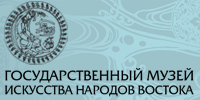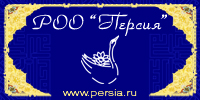 "Uzbekistan", a picture story by Kseniya Kazantseva, opens the first issue of this year.
"Uzbekistan", a picture story by Kseniya Kazantseva, opens the first issue of this year.
2007 - Year of China in Russia
- Our magazine continues a series of publications about the culture of China and the history of that country, now in connection with the Year of China in Russia.
- Yekaterina Zavidovskaya. For People and Spirits to Enjoy. The author, while visiting Shanxi Province, had a chance to witness a performance that almost completely recreates the traditional She Huo festival, which used to be popular throughout China. In recent decades, the tradition of these festivals is being revived, with complete restoration of their musical and dramatic features.
- Lars Fredriksson. The Liquor from Earth Cellar. This article, written by a Sinologist from Sweden, tells a reader about the history and recipes of traditional Chinese liquor. "Preferably," concludes the author, "it should be drunk at room temperature in small cups, in order for the taste to be at its best, and should of course be enjoyed together with good Chinese food."
- Dmitriy Voskresenskiy. Jiangnan, a Land South of the River. The last part of the series of essays by a prominent Russian Sinologist, collectively entitled "China: From the Present to the Past" (see Oriental Collection, No. 1-3/2006), is devoted to the "Land South of the River", a vast region along the right coast of Yangzi. Comparing his impressions of the 1950-s and of today, and referring to the literary heritage of the past, the author recreates the image of this picturesque land, rich in cultural traditions. With its unique ambience, the Land South of the River from times immemorial attracted the people with talent, free spirit, and liberal disposition.
- Andrey Strelkov. The Month of Kalachakra in the Gumbum Monastery. A new journey of the author to the Tibetan monasteries proved to be most dense with impressions. The essay tells about the history of the Gumbum Monastery, about the service of monks in the Serdong Temple, and calendar rituals of the Kalachakra Tantra: preparation of the Kalachakra Mandala, Tsam mask dancing, and "burning of offerings". The rituals of Tibetan Buddhism are always colourful and surrounded by the aura of mystery, but they reveal the secret meaning of Buddha’s teachings and primordial cultural strata.
- Aleksandr Mescheryakov. Emperor Hirohito: Invention of the Body. After the end of World War II, the United States military administration in Japan set itself a task of divesting Emperor Hirohito of his sacral aura, and to make him an ordinary person. Having renounced his divine origin, Hirohito stood as the greatest reformer, whereas General MacArthur said that the Emperor was playing the leading role on the process of democratisation in Japan.
- Viktor Solkin. Egyptian Collection of Oleg Kovtunovich. Oleg Kovtunovich, Soviet diplomat and researcher, has put together a large and diverse collection of Egyptian art before the Act of 1983, when the Government of Egypt had banned export of antiquities. The article tells about Oleg Kovtunovich’s multifaceted personality, and presents his collection. Included in the publication are unique photographs of Nikita Khruschev’s visit to Egypt, when Oleg Kovtunovich acted as an interpreter to the Soviet leader.
- Nikita Sokolov. Indian Playing Cards, Round and Elegant. Traditional Indian round-shaped ganjifa cards have existed for many centuries. Every playing set was unique; it was a work of ornamental art. In recent years, there are attempts at reviving traditional Indian card games.
- Sergey Toroptsev. Like the Garden of the Lord... Lake Kinneret, known also as Lake Tiberias or the Sea of Galilee, is the largest freshwater lake in Israel. Its surroundings are sacred both for Hebrew and Christian religions and cultures.
- Irina Glushkova. Hanuman’s Leap, or It Is Hard to Be a God. The story of Rama is not a static strata of Indian culture, this is the life-giving component of modern ethics and politics. That is why his loyal servant Hanuman, the "Monkey God" is also alive. He is one of the most popular deities in India, and his images can be found in Hindu temples throughout the country.
- Rustam Mirzayev. Successors of Ferghana Armourers. The art of the armourers from Ferghana Valley is well known far beyond the boundaries of Uzbekistan. Every one of the great variety of Uzbek knives has its unique intended use, from vegetable slicing to leather processing.
- Mircea Eliade. The Library of the Maharaja. Our magazine is publishing for the first time a Russian translation of an early work by Mircea Eliade, a prominent scholar of religion and culture. The work consists of two parts, a travelogue that the author has written in 1928 on his way to India, and a diary of a scholar who has just began studying Indian culture. Even this early work reveals Mircea Eliade’s scientific method: to study alien culture by submerging into it and absorbing it with one’s whole being, but at the same time to remain an independent and estranged observer.
You can find the summaries of the previous issues online, by visiting our section of the Russian State Library Web-site: http://orient.rsl.ru/en/






